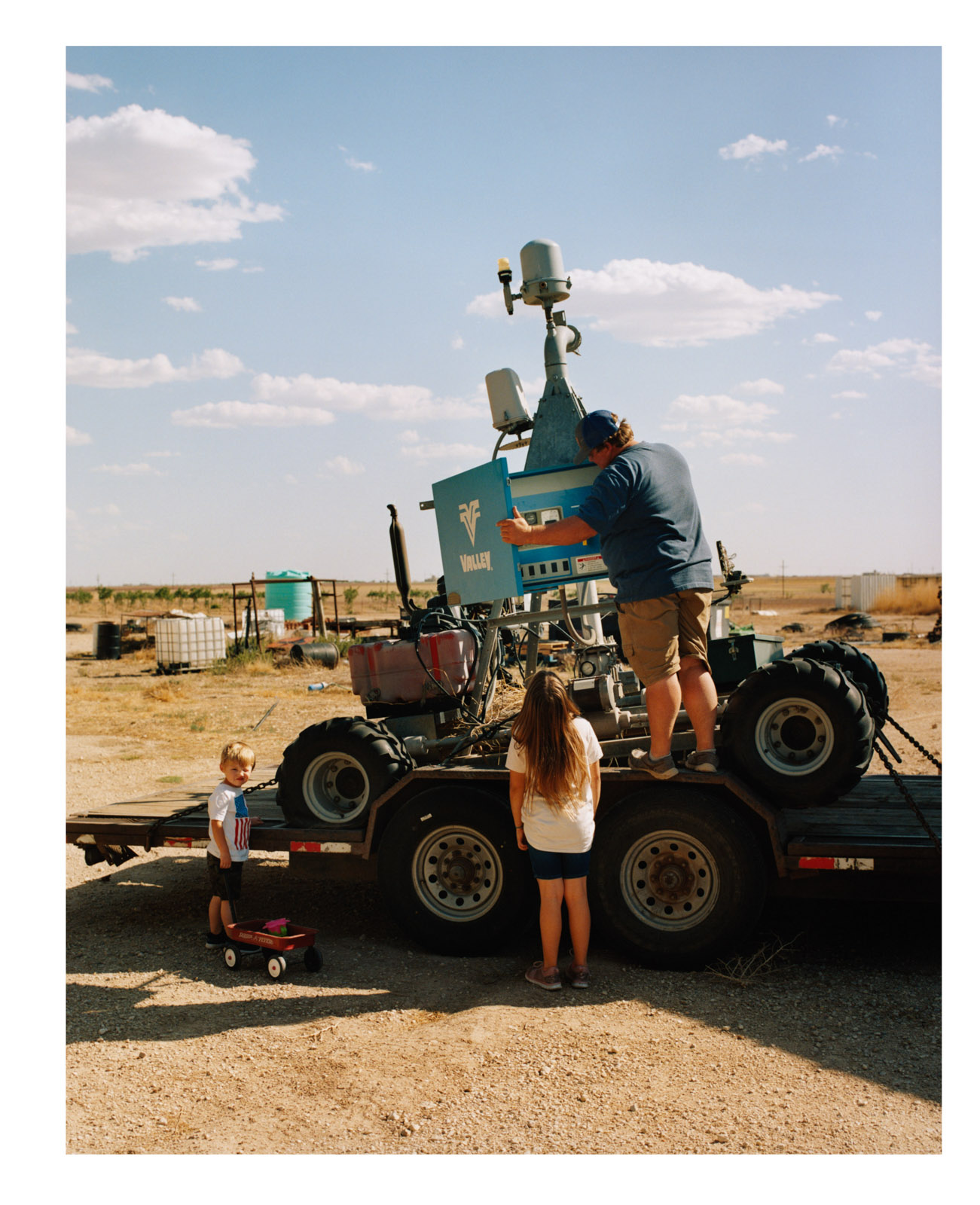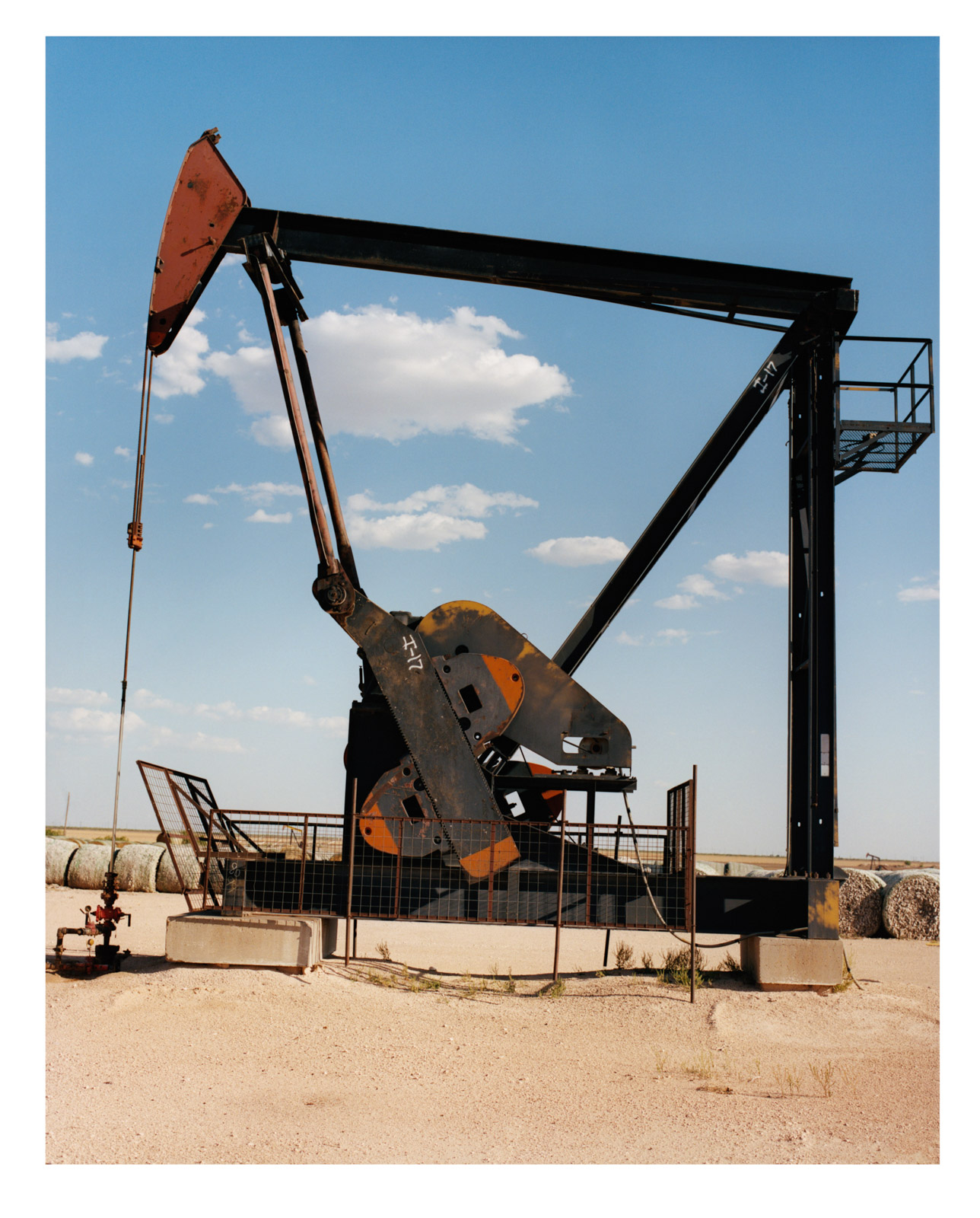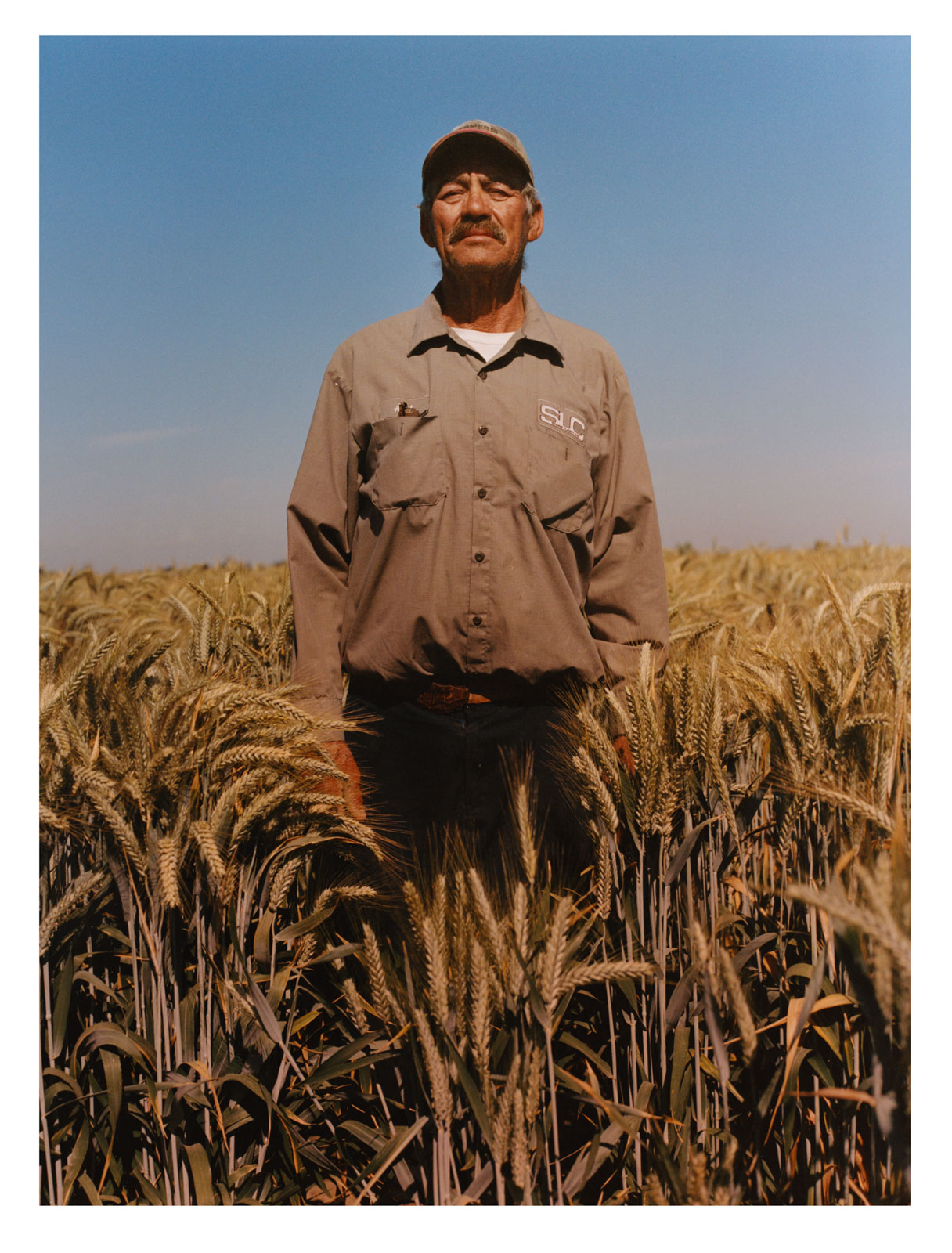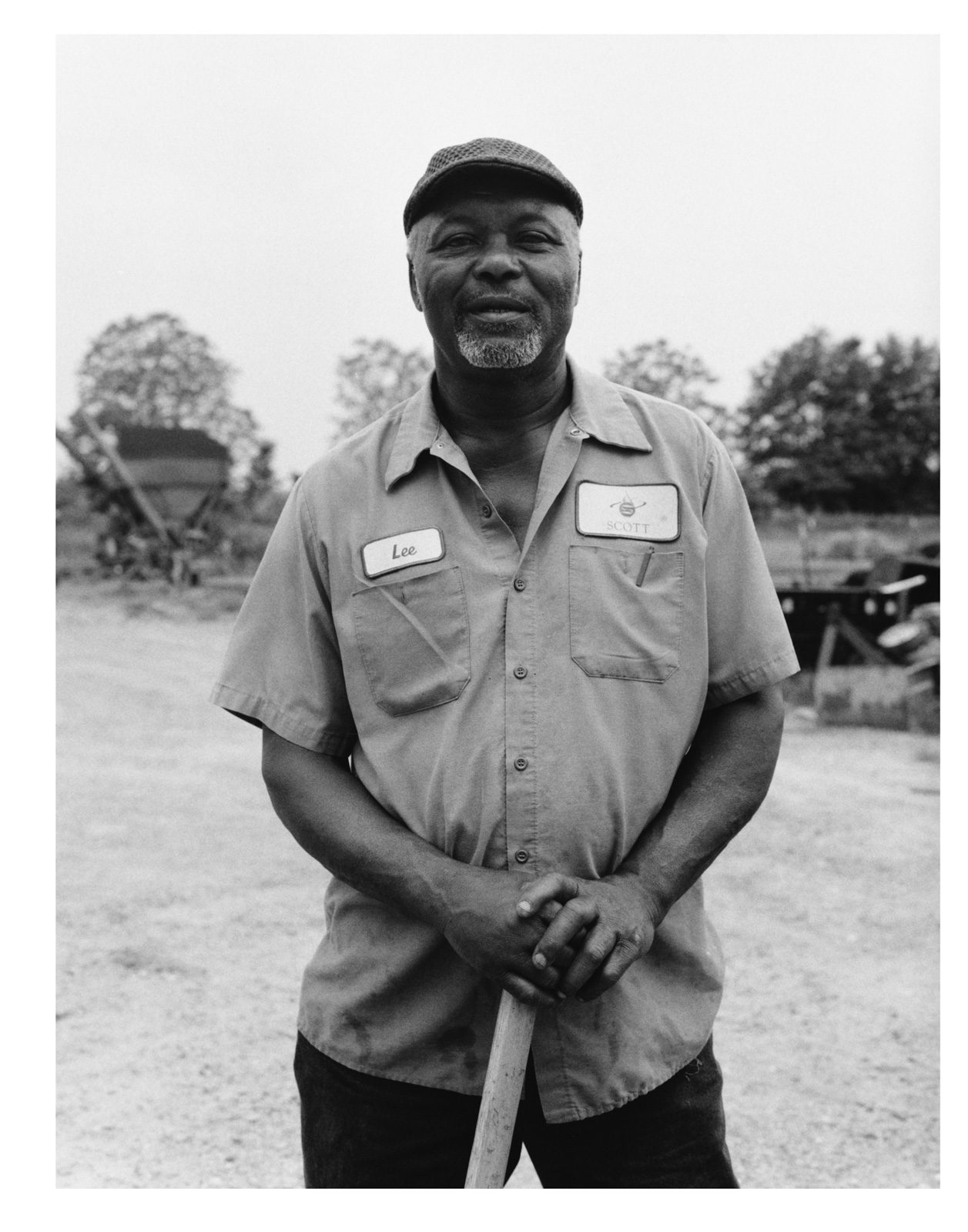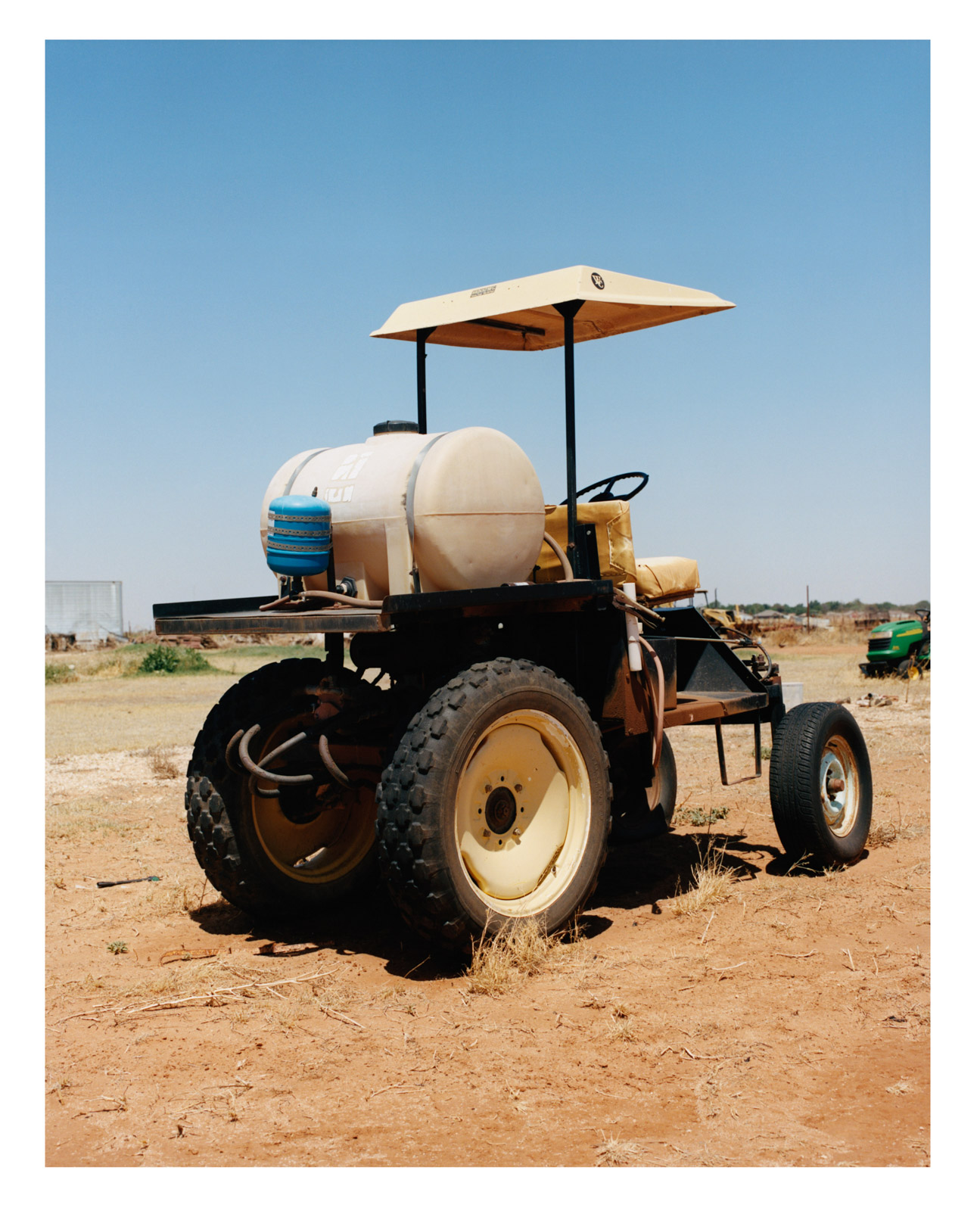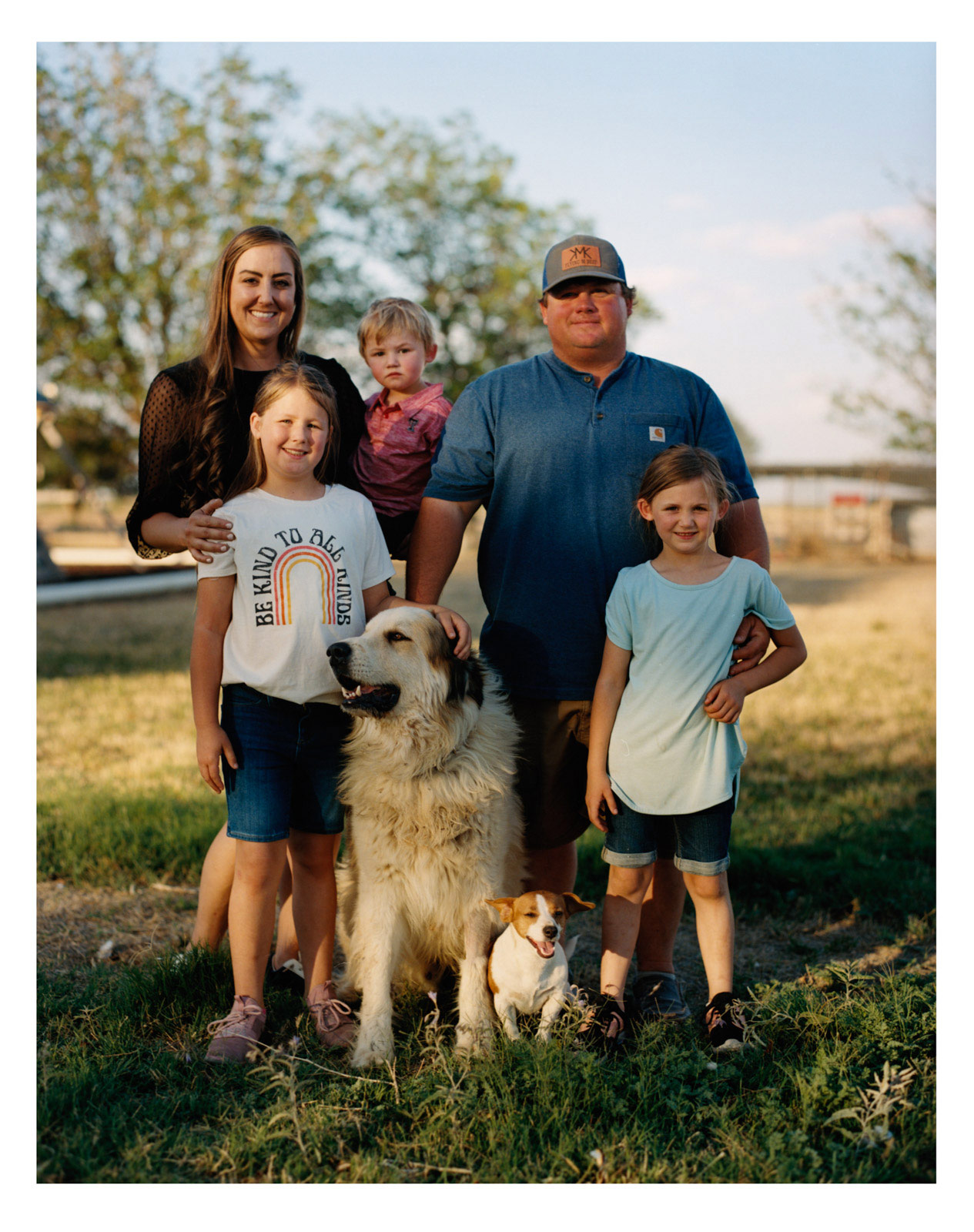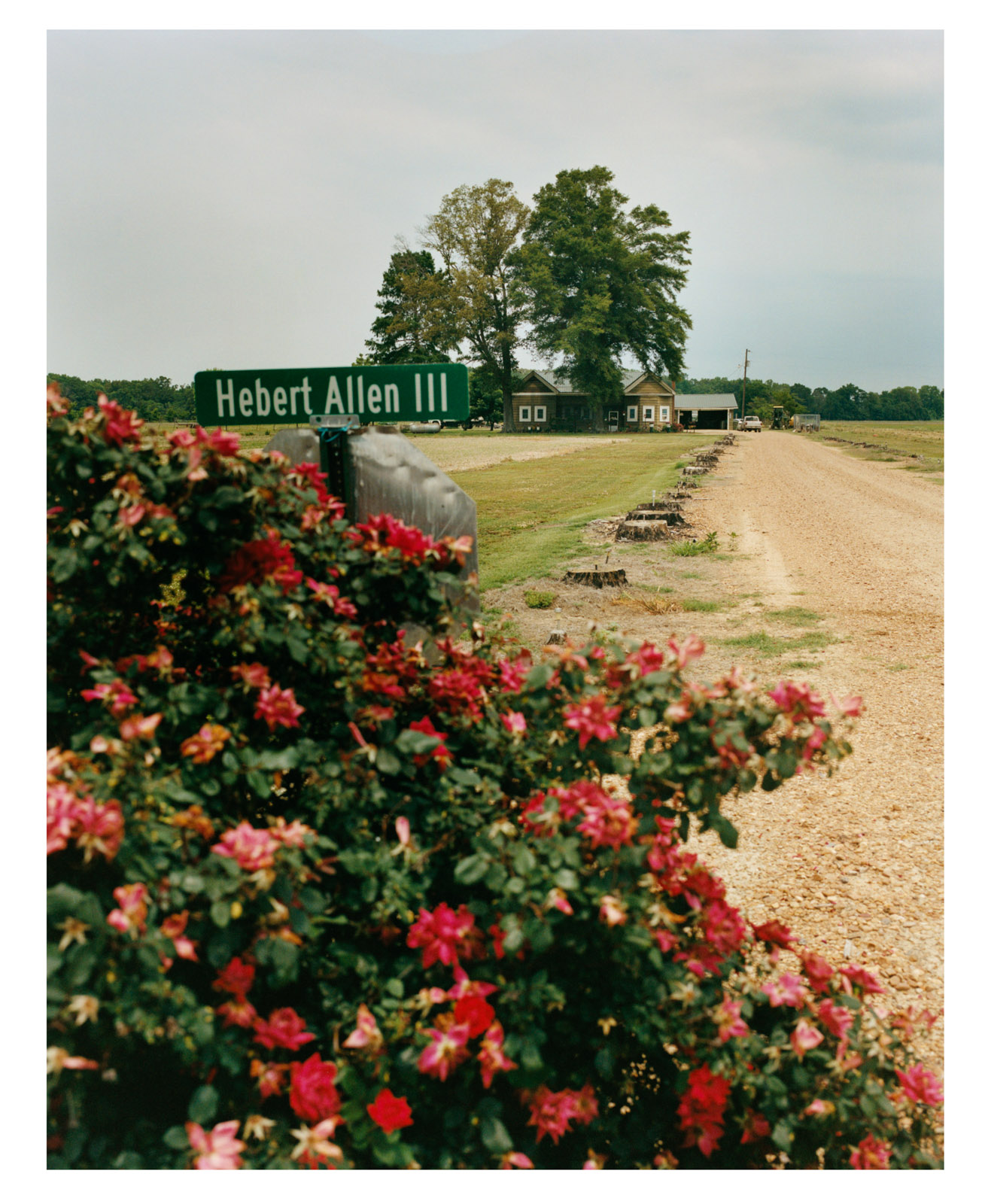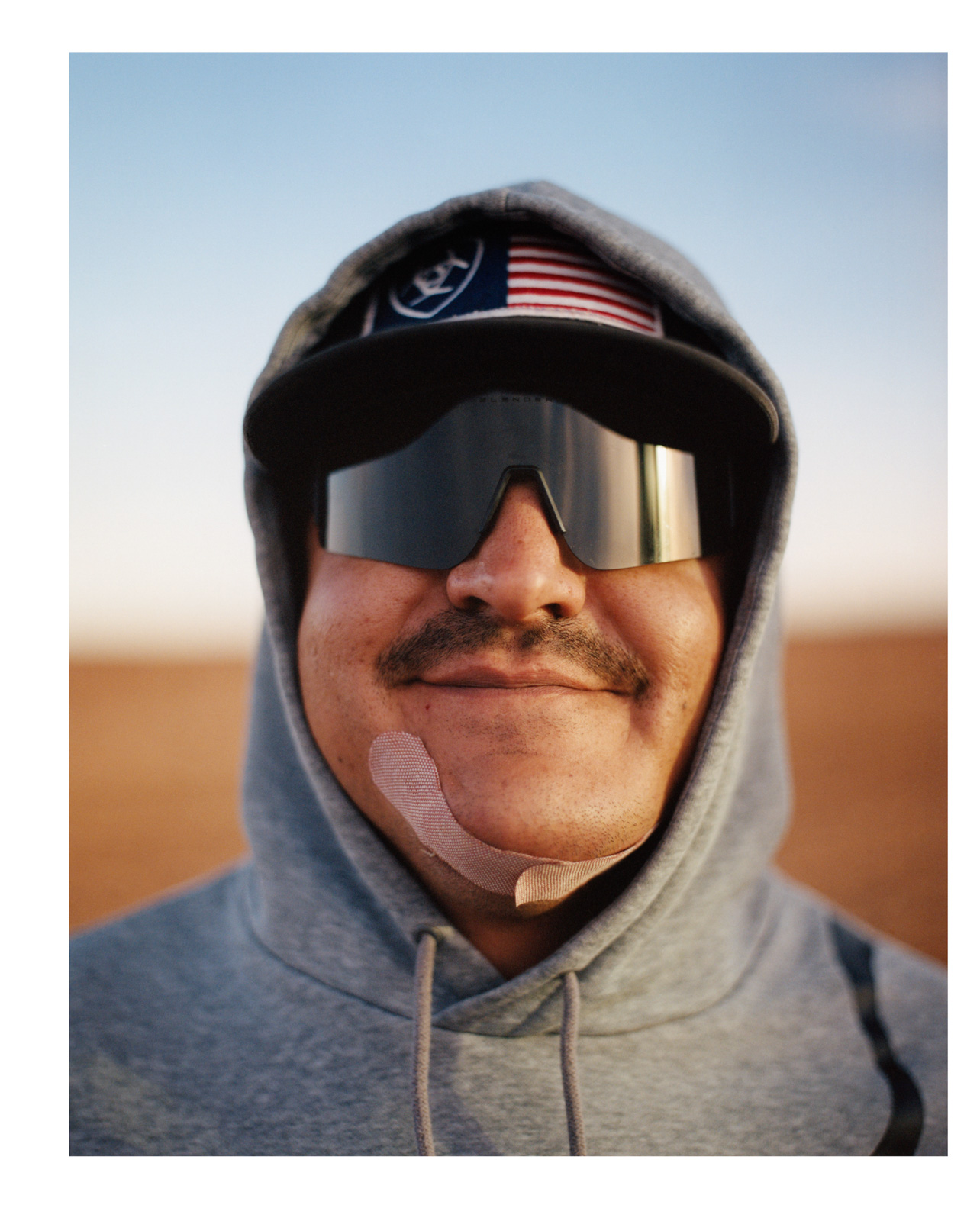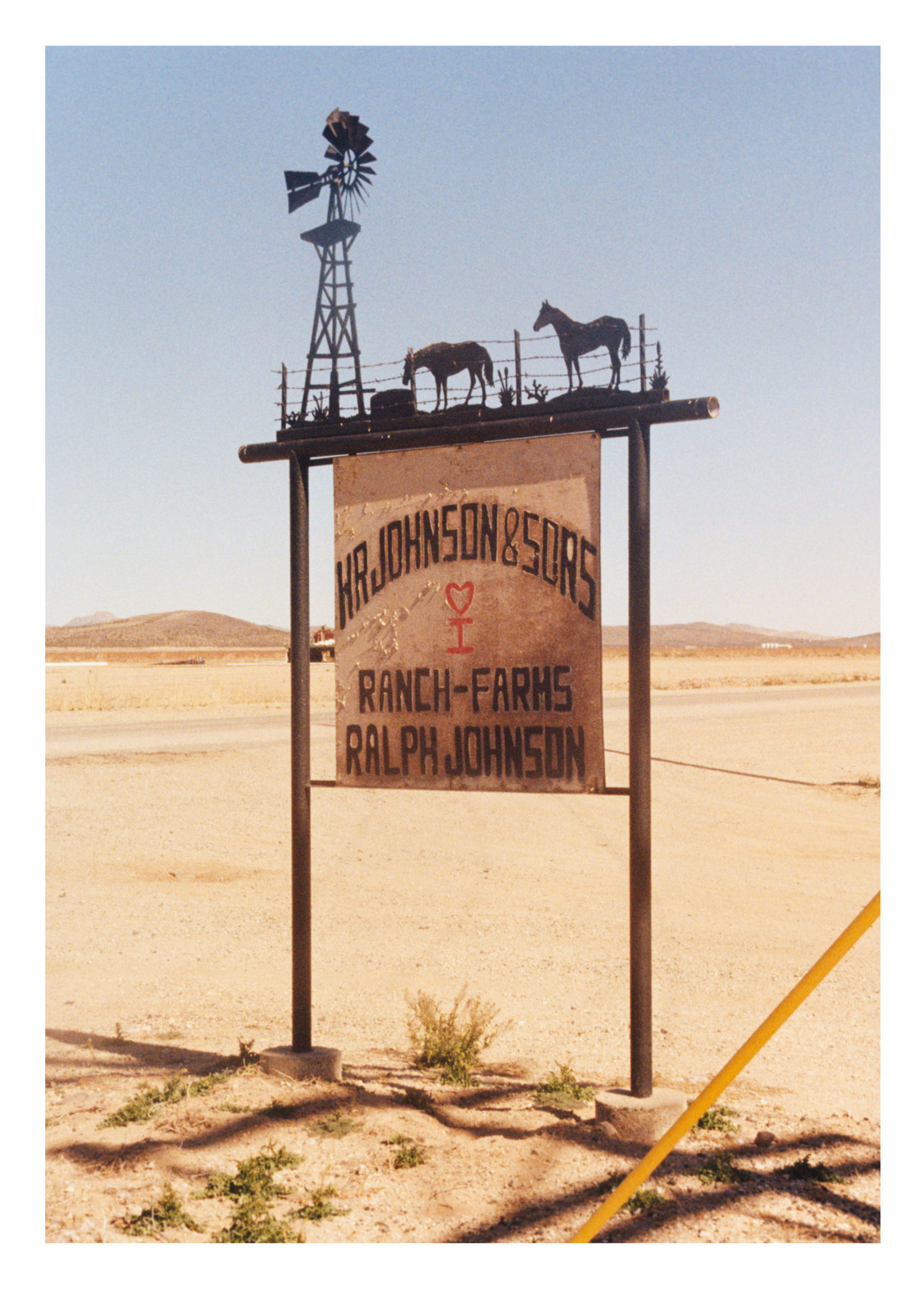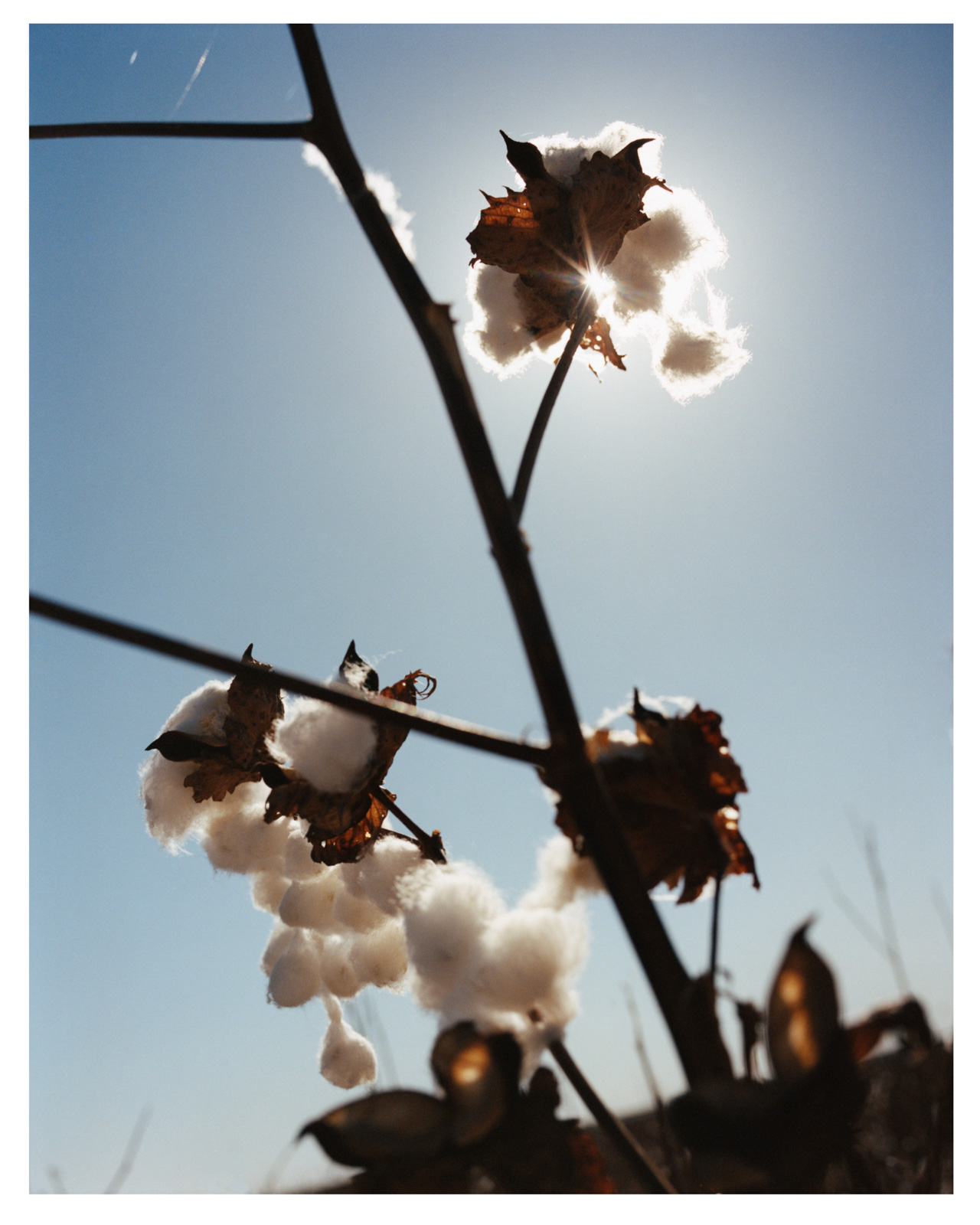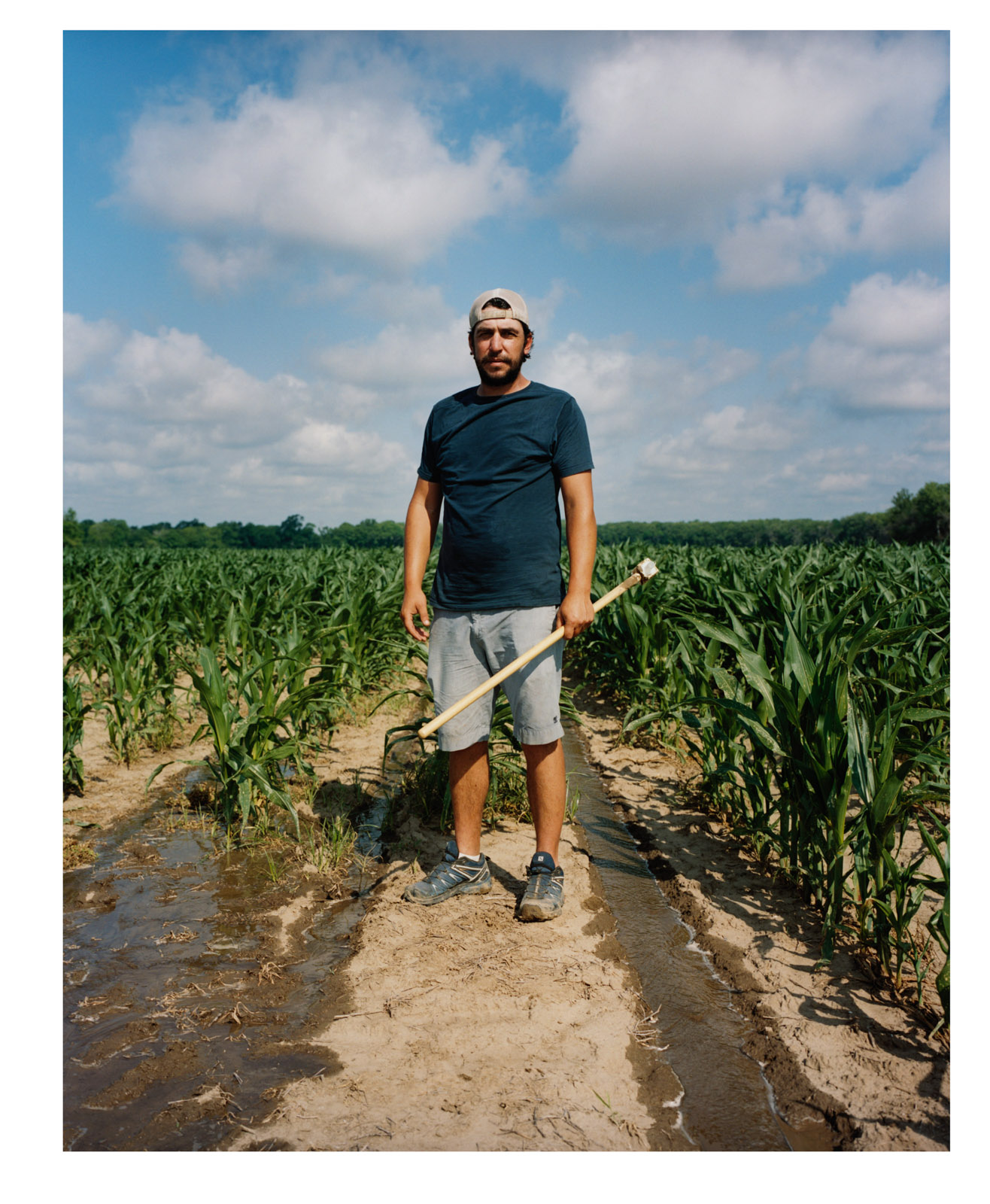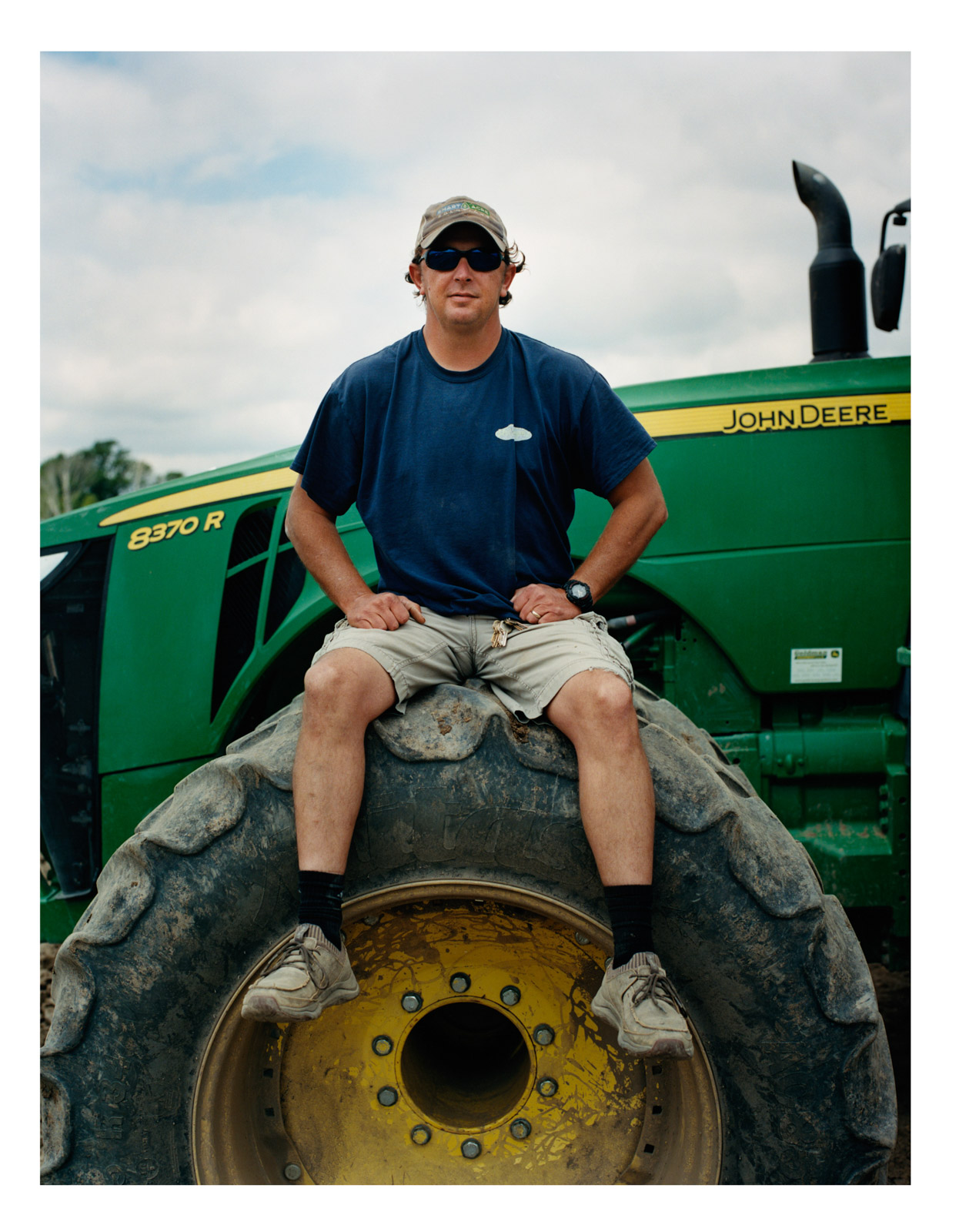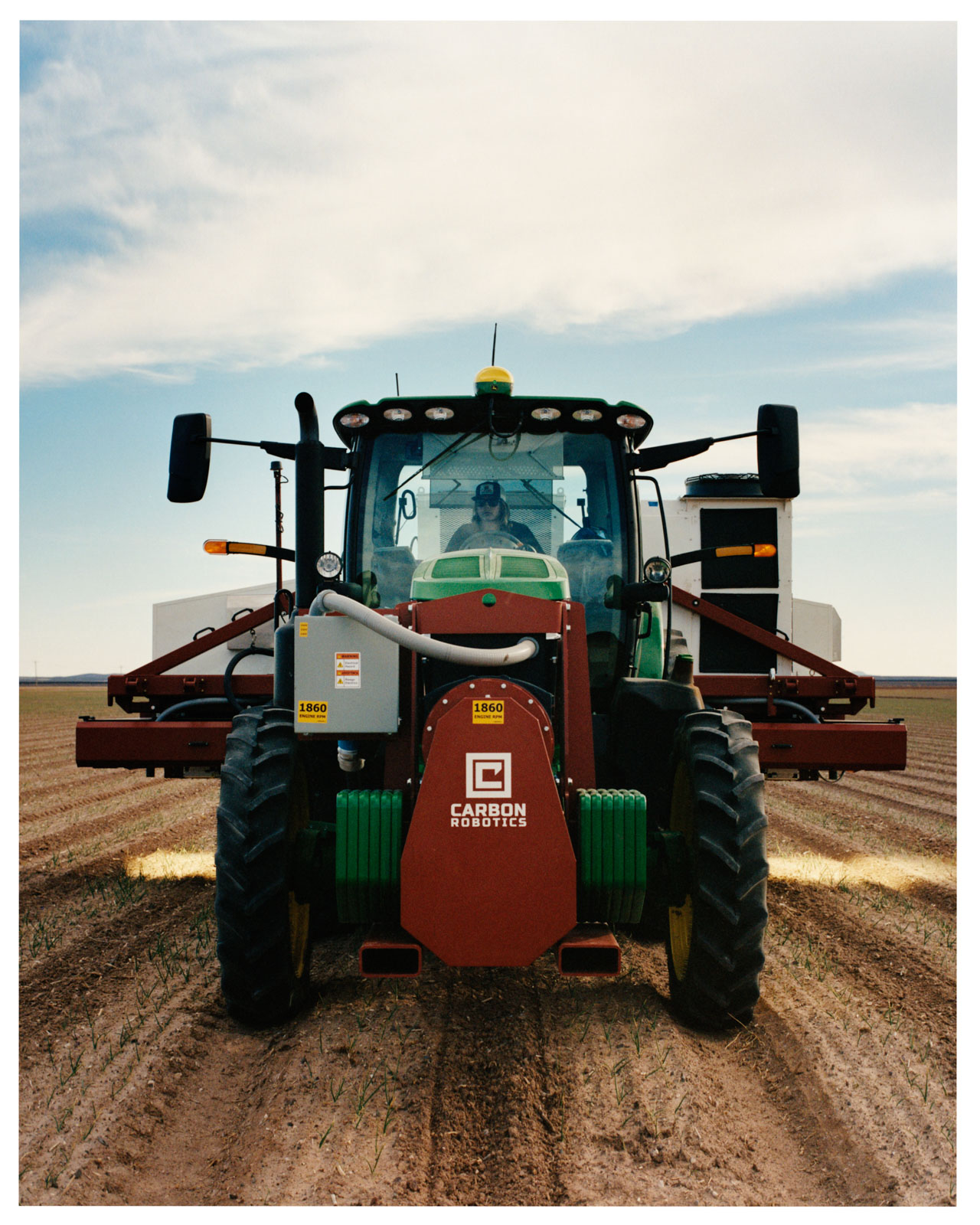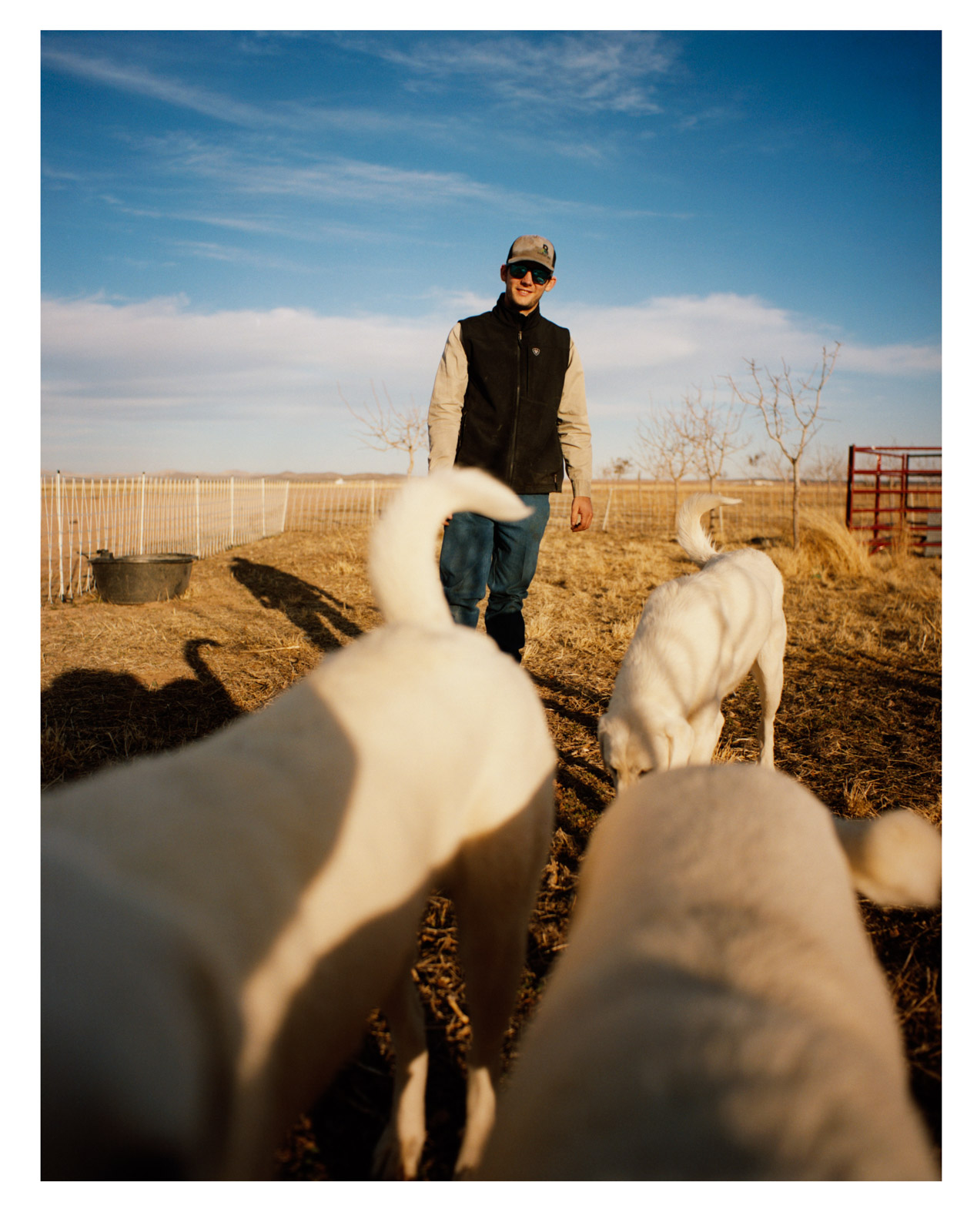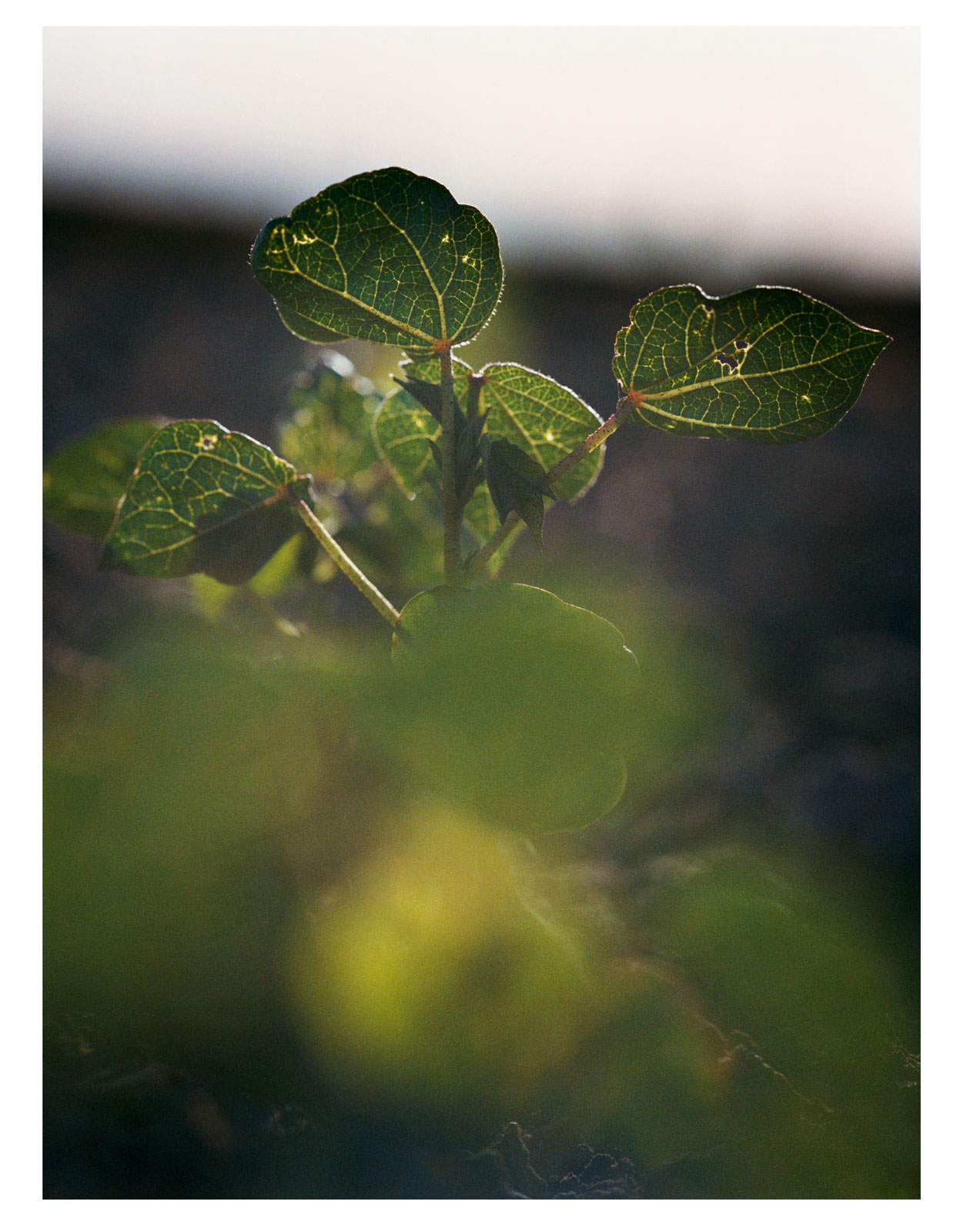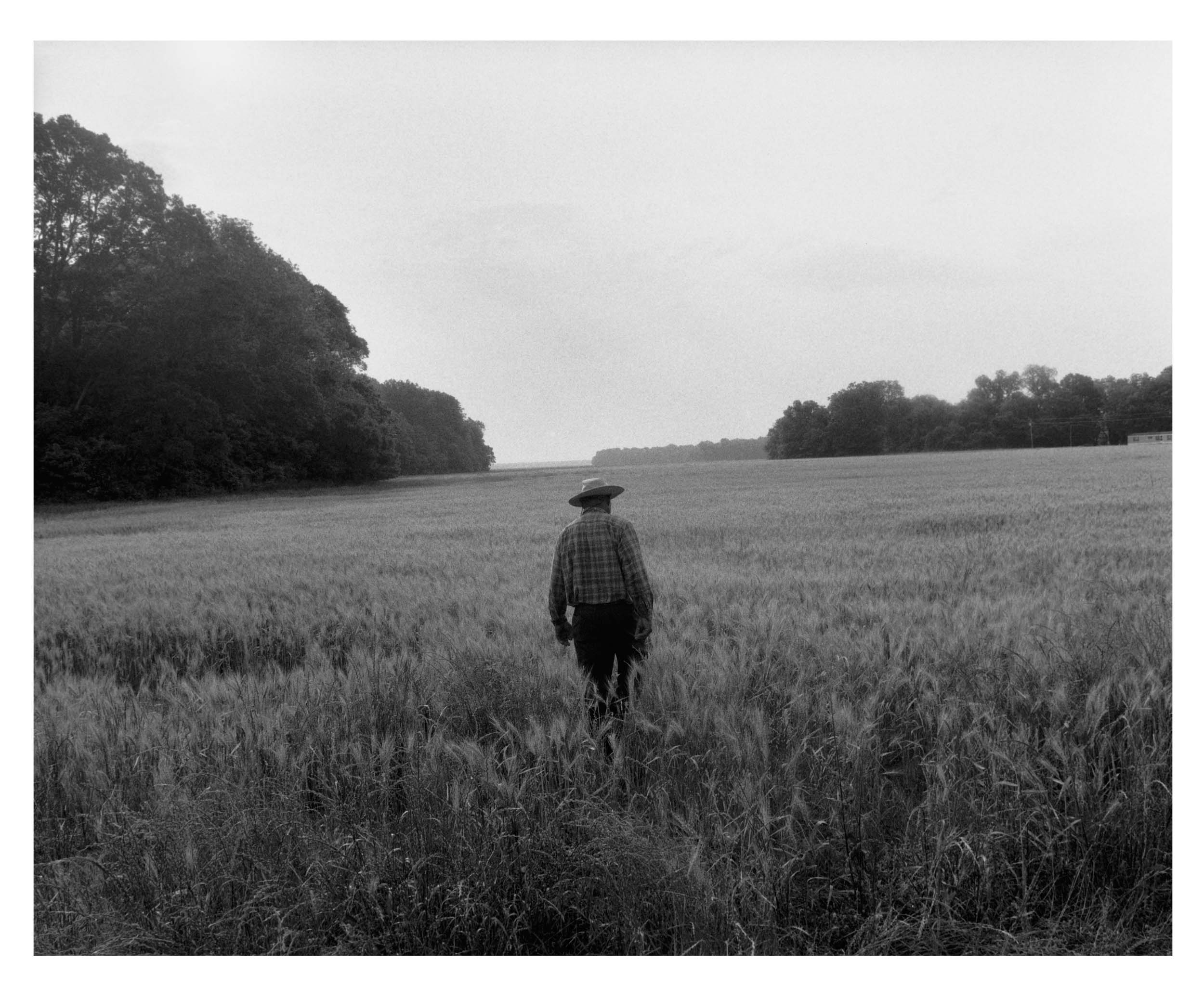
Photographer Laurence Ellis captures the farmers paving a new path toward sustainability for Document’s Spring/Summer 2023 issue
“No water, no soil, no food,” the saying goes. And it’s true. The very survival of our species, which evolved in the forests and savannas of Africa before spreading across the globe, depends on water resources and healthy soils—the right amounts at the right times in the right places. And our ability to feed today’s eight billion people depends on skills and technologies and practices developed over thousands of years, from the first intentional agriculture in Mesopotamia, India, and China, to irrigation, to today’s innovative small family farmers and large-scale modern agribusinesses.
Our earliest ancestors lived off the land, hunting and gathering the food they needed, finding water, and learning how to survive the vagaries of extreme weather and climate. But at some point, perhaps 10,000 years ago, those early humans wondered if it would be possible to gather seeds and replant them near their homes, water wild plants to help them survive, and intentionally cultivate food—inventing agriculture and enhancing chances of survival for their kin and clan.
Successful agriculture requires an understanding of water, soils, biodiversity, and climate. The first empires leaned on crops that could be grown wherever there was reliable and consistent rainfall, or along the great rivers of Asia and the Middle East. Farmers learned how to time planting and harvesting with the seasons, store water for dry periods, and dig canals and aqueducts to move it from rivers to fertile fields. This ancient reality remains true now. Present-day farmers are the world’s largest consumers of water. Of all the water humans collect around the world, 80 percent is consumed by crops.
But our water, soils, and climate are in crisis, threatening food and fiber production, and the ability to feed the planet’s growing population. Even today, while we technically have enough resources to feed and clothe everyone, hundreds of millions of people go to bed hungry, and lack adequate clothing because of factors like poverty, crop failures, and food waste. Soils and groundwater reserves are being depleted by poor practices, and much of our crops are fed to animals, not people. Many modern agricultural practices have stripped the land by converting organic matter into atmospheric carbon dioxide, worsening climate change. They have accelerated soil erosion, destroyed biodiversity and nutrients, overpumped nonrenewable groundwater, and amplified the consequences of floods and droughts—in effect, turning rich, living soils into lifeless dirt. Soils whose nutrients, water, and biota have been depleted will not contribute to solving food and water challenges for the world, nor will they sustain impoverished communities.
I believe a positive future is possible, but it will require new thinking and stronger actions on the parts of individuals, communities, food and water institutions, corporations, and governments. Lessons have to be learned—or relearned—regarding how to live off the land, and produce what we want while keeping soils healthy, balancing water supply and demand, and building resilience against increasingly extreme weather. An important component of this challenge will be shouldered by innovative small farmers who love their land, and understand that practices promoted by corporate agribusiness are often aimed at short-term profit, at the expense of the long-term health of our planet.
“I believe a positive future is possible, but it will require new thinking and stronger actions on the parts of individuals, communities, food and water institutions, corporations, and governments. Lessons have to be learned—or relearned—regarding how to live off the land.”
These farmers are starting to demonstrate a new way forward, some of them documented by Laurence Ellis in this series. As the photographer explains, his work “is as much rooted in the idea of an imagined future”—with potential to move us toward this vision of sustainability—“as it is in exploring current or historical narratives.” The images here tell stories of farmers in West Texas, Mississippi, New Mexico, and California, all working to restore and regenerate soils farming cotton. Cotton is one of the most important non-food crops grown today, but it can be extremely water intensive, and traditional practices have been hard on the land. Cotton production provides income for more than 250 million people worldwide, and around half of all textiles are made from it. Each image offers a sense of place—portraits of individuals and families, committed to the land and a more positive, sustainable future.
With the support of Advancing Eco Agriculture and the nonprofit Kiss the Ground, these farmers are discovering that tired and overworked land can be recovered using regenerative techniques, some of which have been practiced since ancient times by Indigenous communities. These techniques restore carbon and nutrients, slow emissions of climate-changing gasses, rebuild the microbial health of soils, improve the ability to retain water, and increase crop yields. These techniques include reducing the excessive tilling of soils; composting vegetative materials; rotating crops instead of relentlessly growing genetically similar ones; introducing cover crops, which keep pests down and protect microorganisms; and reducing chemical use that kills beneficial insects and contaminates water.
These farmers are melding ancient knowledge with modern technologies, which can identify and selectively remove weeds without herbicides; apply water in precise locations, where and when it is needed, rather than relying on inefficient, wasteful irrigation systems; and rebuild natural microbial conditions and biodiversity using new research about ecosystem health and functioning. As Ryland Engelhart, co-founder of Kiss the Ground, says, “We see an incredible opportunity to impact one of the most chemical intensive and soil degrading systems of agriculture by directly supporting cotton farmers transition to regenerative agriculture.”
An added bonus is that improvements in land management can enhance the ability of soils to store carbon, reducing the speed and severity of climate disasters. As Ben Taylor, an ecosystem ecologist and Ph.D. candidate at Columbia University, describes it, “Thinking about ways to increase soil carbon storage is a really important weapon in the arsenal [against climate change].”
The benefits extend far beyond the field of agriculture itself. These practices generate pride for those working at becoming real stewards of the land, building stronger communities, and adding back rather than depleting. Through Ellis’s portraits, you can see that pride in these farmers’ faces, and in the richness of the ground they stand on.
We are not separate from nature; we are part of nature. When we forget this, we suffer. When we accept our part—when we seek to work not just for today’s benefit, but also for the benefit of all future generations—remarkable things can happen.
Left: At 36, Trentis Allen is one of the youngest Black farmers in Humphreys County, Mississippi, if not the youngest. He’s following in the footsteps of resilient generations before him in the Delta, where racial and financial barriers placed insurmountable obstacles in the paths of others. “I want to generate wealth,” he says. “Not for me: for my daughter and my nephews and generations to come, so that [we] have a stronghold in an area where there are a lot of people who expect you not to succeed.”
Right: Trentis’s father, Herbert Allen Jr. “After my grandfather died, whatever debt he had, my dad worked to pay off so [that his] land became available to all the siblings,” says Trentis. His 66-year-old father and his longtime farmhand, Oscar Young, work alongside him today, growing cotton, corn, soybeans, wheat, milo, and oats across 800 acres. “My grandfather built [our farm]. My dad helped save it, sustain it, keep it. And I’m elevating it.”
Left: Whit and his two children. Whit’s parents both come from farming families; almost 50 years ago, they migrated from a small German community outside San Angelo, Texas to work their own land in Saint Lawrence. All three of their children were born and raised here, but he was the only one to take a shine to the family business. “I was probably driving a tractor when I was seven years old,” says Whit, whose earliest recollections are of helping his father raise cotton on their 3,000-acre family farm. “I literally would have to jump out of the seat to push the clutch in to stop it.”
Right: Trentis with his mother. “Half of this land was all woods. What you see now was trees and water,” he says, surveying the carefully planted rows of crops surrounding his family home, in which he grew up as the youngest of three siblings.
Left: An oil pumpjack in West Texas near Whit’s farm. Hiring help in this part of the state is an ongoing struggle for farmers, who are competing in the regional labor market against deep-pocketed oil companies.
Right: Tony Abel at the Stone Land Company Farm. The rich Central California terrain is famous for being one of the most productive agricultural regions in the country; 25 percent of the nation’s food is grown here. A long-running and increasingly worrisome drought is making it one of the most challenging places to grow crops, too. But by employing regenerative agriculture practices, they cut back on irrigation needs, promoting soil health and water retention.
Tony began converting the family’s farms to drip irrigation in 2008—a major capital investment that was completed over the course of 10 years, thanks in part to grants, investments from nonprofits like Kiss the Ground, and USDA water conservation programs. “It allows us to grow better yields and [employ] more precise irrigation,” he says of the system, which enabled Stone Land Company to cut its water usage by up to 30 percent.
Leo, a worker on Trentis’s farm. The farm was incorporated by Herbert Allen Sr. in the ’40s. He received a mule and 40 acres in the Delta flatlands as a loan from the government, on land that was drained to form a Black settlement following Emancipation. Most of the original Black families who took on these parcels of land eventually left, in hopes of improving their lots in life up North, in places like Tennessee. “They had better jobs in factories, versus being out here chopping fields and picking cotton,” says Trentis. “There’s maybe 30 to 40 people that still have their [original 40 acres], but not here in this county.”
Left: A mothballed pesticide spraying machine in West Texas. “Thanks to NASA, we know more about the stars than the soil beneath our feet,” says Kish Johnson of Advancing Eco Agriculture, pointing out that the use of synthetic inputs cripples the soil as a functioning, living organism, making the grower more and more dependent on chemicals in the process.
Right: Whit Braden on his 320- acre farm, where he lives with his wife, LaShae, and their three children, plus a menagerie of animals including two dogs, a flock of free-range chickens, guinea fowl, and a kind-natured calf named Reba.
Left: Trentis’s farm, Humphreys County, Mississippi. Herbert Allen Sr. had nine children, who each own part of the land. His son, Carl, passed away in 2012.
Right: Francisco “Pancho” Duran on the Carzalia Valley Farm in New Mexico. The farm has been fully regenerative since 2020. In the late-’90s, he farmed the way he had been taught to: leaning heavily on soil-sterilizing fungicides and pesticides in order to combat common crop ailments like pink root, Texas root rot, phytophthora, and other fungal soil pathogens. “We thought, This is going to be great—we can take care of all of these problems,” Kish Johnson says. But the additives had the opposite effect: “I think that was the first time I started realizing that something was wrong.” Kish solicited a barrage of consultants, most of whom advised heaping on more products to counterbalance the first ones. It wasn’t until a chance meeting with the AEA in 2018 that things began to change.
The Allen family and their friends outside sister Felicia’s soul food spot, Sweet Mama’s Kountry Kitchen in Clinton, Mississippi. Felicia pioneered the farm-to-table soul food restaurant, often incorporating ingredients grown on the farm.
Left: About 88 miles straight west of El Paso, Texas, right up against the Mexican border. Carzalia Valley was first established by Johnson’s great-grandfather as a cattle ranch in 1918; they drilled the first irrigation well in 1951. After weathering some extreme drought in the ’30s and ’50s, they began growing vegetables—yellow, white, and sweet onions, as well as chiles. They got into the cotton business shortly thereafter, building a cotton gin in the ’70s which they operated until the ’90s, when the technology for bale presses got too expensive. They turned back to cotton in 2003—an answer to the sustainability question of their onion crop.
Right: Walker Johnson, son of farmer James Johnson of Carzalia Valley Farm. Says James, “I told my son, you’ve been given a gift: I have to unlearn everything that I’ve done for the last 24 or 25 years. You don’t have to learn all of these bad things that we’ve been doing. You don’t have to deal with all of the mistakes. We can start doing good now. You will know this better way.”
Mike Thompson, a fourth- generation cotton farmer based in Littlefield, Texas. “There is more biology beneath our feet than above, and while we still don’t understand everything about soil biology, plant physiology, and the synergistic relationship between [them], nature has laid out a roadmap—all we have to do is mimic it.”
Left: Traditional cotton production has been catastrophic for global water consumption. The production of one kilogram of cotton requires 10,000 liters of water, which some experts contend makes it the largest consumer of water of all agricultural commodities. To help farmers move towards regenerative cotton agriculture and drastically reduced water use, Kiss the Ground Cotton works directly with farmers in the United States and abroad—supporting growth, education, and adoption along the continuum of regenerative agriculture.
Right: A farmer at one of the California farms supported by AEA. “The limitations and the financial barriers primarily come from the fact that we all, at a number of levels, need to take responsibility for how we’ve treated the most valuable resource on the planet—the one that sustains all life, which is the soil,” says Kish.
A donkey on Trentis’s farm. Regenerative grazing is a principle- driven agricultural practice, building soil health by managing livestock on perennial and annual forages in a way that supports human and ecosystem well-being, farm profitability, and community and food system resilience.
Herbert holding soil from his field. Restoring biodiversity in soils, particularly in grasslands, can dramatically increase their capacity to capture and store carbon. The word human comes from the Latin humus, meaning earth, ground, or soil.
Left: The last potent greenhouse gas is water vapor—which we have a lot of. As the climate warms, we have more water in our atmosphere, which holds onto heat. Healthy soil can combat it by storing and infiltrating more water, due to its higher levels of organic matter. We have the potential to store more water in our soil than in all our dams, rivers, and lakes combined by practicing regenerative agriculture and increasing organic matter in soil.
Right: The Carbon Robotics LaserWeeder on the Carzalia Valley Farm. The LaserWeeder employs AI and deep-learning robotic systems, combined with high-power lasers, to eradicate weeds using thermal energy without disturbing the soil—thus minimizing the need for chemical herbicides and pesticides.
Left: Taylor “TJ” Johnson with his hearing dogs at the Carzalia Valley Farm. Recently, the farm has incorporated planned grazing into its regenerative practice. Planned grazing refers to the process of moving livestock from pasture to pasture at the right time—allowing animals to fertilize the land, disturb and aerate the soil, and actually trigger plants to come back stronger. When done correctly, grazing can actually increase biodiversity and improve levels of soil organic matter.
Right: As new cotton plants emerge in California, so do the possibilities of regenerative agriculture as a central, long-term solution to so many climate and nature-based problems. While regenerative agriculture has started to gain traction in the food industry, more brands and manufacturers need to adopt its practices to help the fashion industry become more sustainable. The Citizens of Humanity Group, based out of LA, has partnered with Kiss the Ground to launch Kiss the Ground Cotton, a program that will work directly with farmers in the United States and abroad to support their growth, education, and adoption along the continuum of regenerative agriculture, with endowments for each pound of cotton produced benefitting the non-profit organization.
Herbert walks across a field of cover crops at his farm in Mississippi. The concept of covering fallow land with vegetation to reduce erosion and provide biological and structural improvements to the soil has been practiced for centuries. There is evidence that it was used in ancient China and India to enhance crops; the Romans employed it in their vineyards; Native Americans placed diverse plants together in a way that benefitted each, calling it “Three Sisters”—corn, edible beans, and squash. As herbicides and pesticides grew broadly available, it became uncommon for farmers to cover their soil in the winter with an unsaleable crop—arguably, one of the triggers of the devastating Dust Bowl in the Midwest during the ’30s, when millions of acres of land lost topsoil to windstorms.




